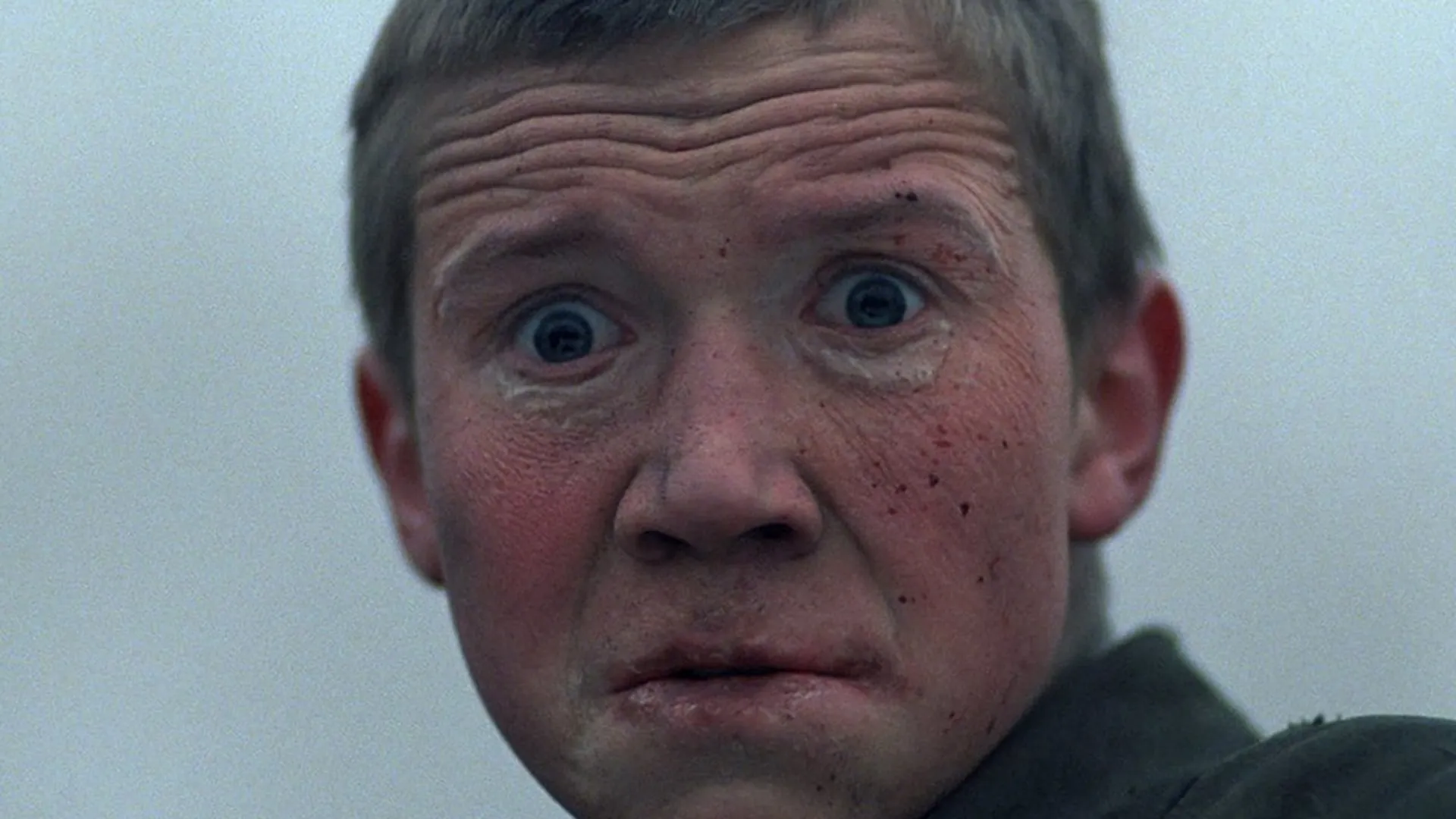
© Mosfilm/Belarusfilm
Witnessing the Horrors of War
Film
Come and See
Year
1985
Director
Elem Klimov
DOP
Alexei Rodionow
Country
USSR
Timestamp
02:19:18
18.10.2025
Come and See is a Soviet war film directed by Elem Klimov and released in 1985. Set in Belarus during the Nazi occupation in 1943, the film follows a young boy named Flyora who joins the partisans, full of naive excitement, only to be confronted with the unimaginable horrors of war. The narrative is loosely based on real events and testimonies from survivors of the German massacres in Belarusian villages. Historically, the film was produced during the final decade of the Soviet Union and reflects a broader cultural movement toward confronting the trauma of World War II with unflinching realism, rejecting the glorified depictions common in earlier Soviet war cinema.
Sound and Symbolism
What strikes me first is the film’s use of music. Right after the haunting opening sequence, when the title Come and See appears, we hear the old German national anthem, a chilling sonic cue that foreshadows the approach of the Nazi army. The anthem does not glorify; rather, it signals a force of destruction advancing toward the innocent. This deliberate use of sound reminds me of a moment in Casablanca (1942), specifically the famous “La Marseillaise” scene, where the patrons of Rick’s Café sing the French national anthem to drown out the Germans’ “Die Wacht am Rhein.” In both films, music becomes a political act — a tool of resistance or, in Come and See, an omen of terror. Klimov uses sound not to inspire but to warn, transforming the anthem into a harbinger of devastation.
The Final Scene and the Dehumanization of War
In the film’s devastating final moments, Flyora discovers a portrait of Adolf Hitler and fires his rifle at it repeatedly. Between each gunshot, Klimov cuts to archival footage — Hitler as a child, Hitler with his mother — and then reverses the footage, as if Flyora’s bullets were trying to undo history, to erase the violence that shaped him. The boy’s blank, lifeless expression in these scenes embodies the psychological destruction war has wrought upon him. Once an innocent child, he now bears the hollow stare of someone who has seen too much, too soon.
Unlike many war films that aestheticize violence or turn battle into spectacle, Come and See rejects heroism altogether. It immerses the viewer in chaos and terror to confront the viewer with the moral and emotional cost of war. By the end, Flyora’s face becomes a silent critique — a mirror reflecting what fascism, and war itself, does to the human soul.